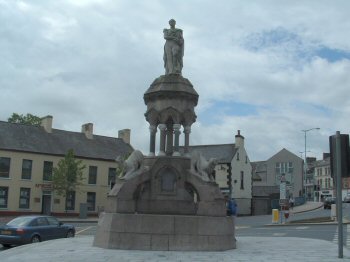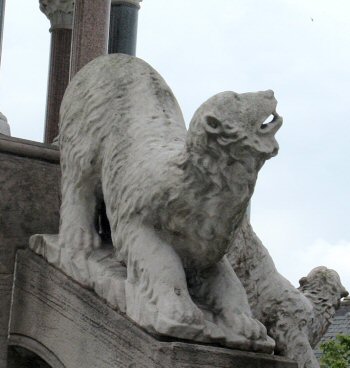[ preceding article can be read here
On 11 June 1847 Sir John Franklin died and Crozier assumed leadership of the beleaguered expedition. It was his first and only command in the Royal Navy and he was soon faced with a perplexing dilemma.
Ought he and his men to wait for the pack-ice that held them fast to melt, or abandon ship and strike out overland for the Hudson Bay Company outpost on
With men dying and supplies running out, he opted for the latter. He calculated that a trek of 160 miles would bring them across inhospitable Arctic desert to Back’s River which, if ice-free, would allow them to sail to safety across the
It turned out to be a death-march for unfit and sick sailors. Of the 105 officers and men who set out on 22 April 1848, there were no survivors! Fourteen years later McClintock’s team found some remains fifty miles short of Back’s River. Numbed with cold, tortured with hunger and dehydrated, Crozier’s men moved slowly across the ice, man-hauling their sleds and boats up jagged ice-pressure ridges while at other times sinking in the soft wet snow up to their hips. Clothing, saturated with sweat from exertion, clamped them like a frozen strait-jacket when they rested.

Physical punishment and torment were unrelenting as they advanced a pitiful three to four miles a day. While flesh on faces froze, turning the skin a scaly grey, it was frostbitten feet which caused most despair and panic. When limbs became infected they swelled grotesquely, turned black and emitted a foul smell. Not only was it necessary to abandon a man who couldn’t walk or haul and who was a liability for the whole team, but there is evidence that Crozier may have had to make the nauseating decision to cannibalise the dead. Remains later found along the route attest to intentional dismemberment of corpses. It was a choice that may – temporarily – have prolonged the life of others, given the toxicity of Goldner’s supplies.
Crozier’s body was never found, allowing the possibility that it was devoured by polar bears – as might be suggested by the town centre monument. There is also ample evidence of his leadership skills, which unhappily proved to be in vain.
A number of ironies persist. His expedition did indeed chart the way to a North West Passage. However, it was never ice-free long enough to afford a profitable trading route.
The final irony may be that with polar ice melting as a result of global warming, this passage may in the near future, afford the profitable trade route that it never was before.
